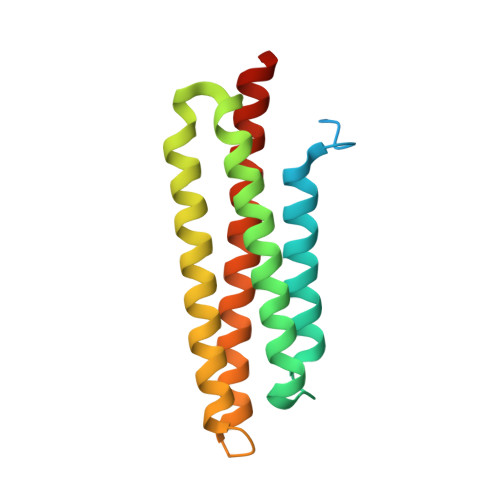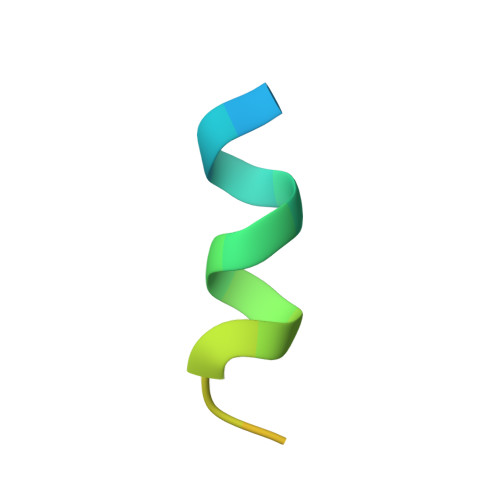Structural basis for the interaction between focal adhesion kinase and CD4.
Garron, M.L., Arthos, J., Guichou, J.F., McNally, J., Cicala, C., Arold, S.T.(2008) J Mol Biol 375: 1320-1328
- PubMed: 18078954
- DOI: https://doi.org/10.1016/j.jmb.2007.11.040
- Primary Citation of Related Structures:
3B71 - PubMed Abstract:
Focal adhesion kinase (FAK) and CD4 fulfil vital functions in cellular signal transduction: FAK is a central component in integrin signalling, whereas CD4 plays essential roles in the immune defence. In T lymphocytes, FAK and CD4 localise to the same signalling complexes after stimulation by either the human immunodeficiency virus (HIV) gp120 glycoprotein or an antigen, suggesting the concerted action of FAK and CD4 in these cells. Using crystallography and microcalorimetry, we here show that the focal adhesion targeting (FAT) domain of FAK binds specifically to the CD4 endocytosis motif in vitro. This FAT-CD4 complex is structurally and thermodynamically similar to the one FAT forms with paxillin LD motifs. The CD4 binding site on FAT presents the same features as the established CD4 binding site on the HIV-1 Nef protein. The binding of FAT to CD4 is incompatible with the binding of Lck to CD4. We further show that HIV-1 gp120 triggers the association of CD4 with FAK in T cells, under conditions that are known to dissociate Lck from CD4. Our results suggest that the FAK-CD4 complex represents an alternative route for eliciting T-cell-specific signals and that it links gp120 engagement to distinctive T-cell signalling during HIV infection. In infected cells, HIV-1 Nef may displace FAK from CD4 to protect the cells from apoptosis.
Organizational Affiliation:
INSERM, UMR554, 34090 Montpellier, France.















